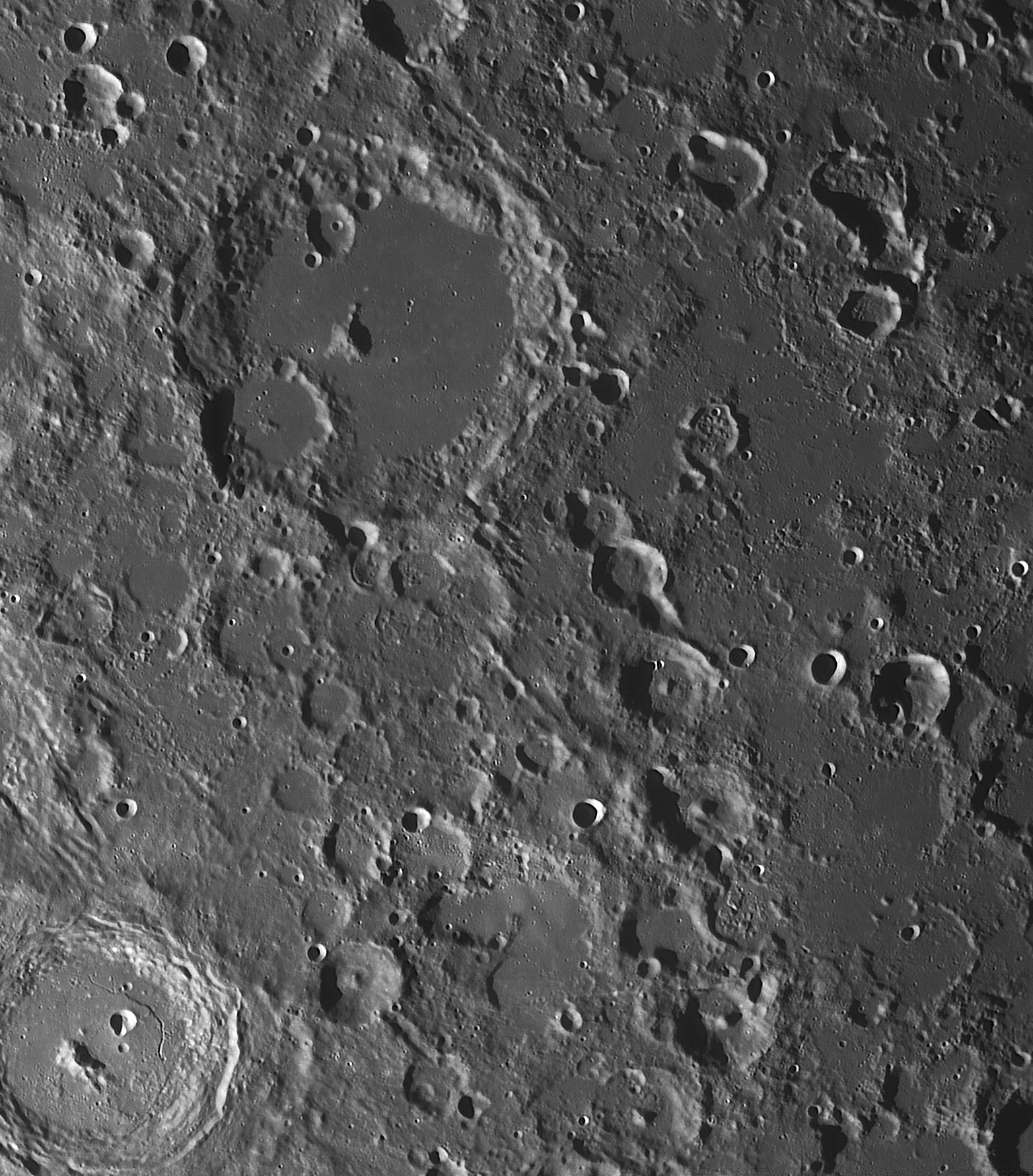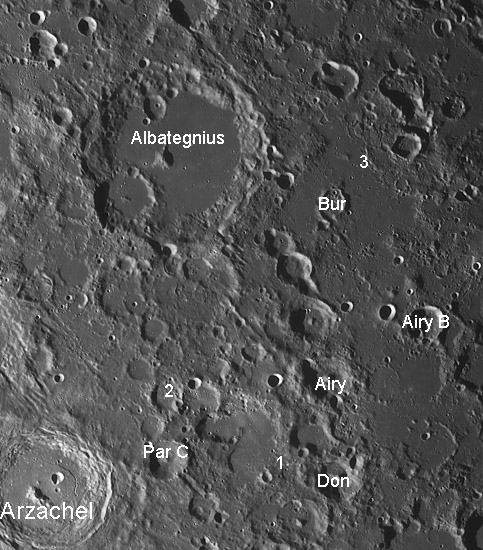November 16, 2014
An Image To End All Images (Almost)

image by Richard Bosman, Enschede, Netherland
 |
This is what I am going to miss most about LPOD: coming across, on an amateur image, features that I have never noticed before. Richard's excellent image looks like it came from lunar orbit, a far cry from the first LPOD image. The entire image includes the favorites of Alphonsus and Ptolemaeus, but what attracted me is the fresh perspective of the odd terrain between those large craters and the Nectaris Basin, off the image to the right. The Imbrium sculpture slashes across the western half of the view, with nearly parallel chains of basin secondaries pointing bask toward the basin. But what immediately caught my eye was the much more delicate linear feature (1 on the annotated image at left and extending across the northern rim of Donati - Don) that at first looked like a possible image seam. But LRO QuickMap confirms that it is there, as well as a parallel feature on the smooth material to the north. I assume these are old secondary crater chains, but from where? They point towards Arzachel, and beyond that Kepler. But I would think that secondaries from those craters would be fresher. A much fresher, nearly parallel band of secondaries (2) is about 45 km to the north. These are fresh enough, and aimed in the right direction to be from Kepler. The next feature of interest is the floor of Airy. Richard's image clearly shows the rille-like troughs that cut the floor; LRO does too. I don't think this is a floor-fractured crater but these may be cooling fractures in Imbrium Basin ejecta. Just south of Airy is a bizarre old crater whose floor contains remnant high-standing terrains. If this were Mars we would simply think it is another relict feature eroded by flowing water or perhaps wind. I don't what caused this lunar feature. Burnham (Bur) has a somewhat similar floor. Now to a strange 15 km wide, 1 km high hill, just north of Airy B - is this a piece of an ancient basin rim? Although there are many intriguing landforms here - do you see the small simultaneous impact craters? - I want to mention just one more that I hadn't noticed previously. Labelled 3 is the edge of what looks like a thick flow (Imbrium fluidized ejecta?) against higher terrain that is cut by three remnant rilles. This is most odd.
|
Yesterday's LPOD: Motion Sickness?
Tomorrow's LPOD: Ejecta Deposits
COMMENTS?
Register, Log in, and join in the comments.



